BMW 730Ld review, road test
The future is here with the all-new 7-series which is packed with the latest tech to win over super luxury car buyers.
Published on Jun 16, 2016 07:00:00 AM
6,33,330 Views
Follow us on

New 7-series looks more dynamic than its predecessor.


Where the last Seven looked like an evolution of its direct predecessor, the latest version of BMW’s limousine looks entirely new. The lines are tauter and BMW has gone for a sportier, more dynamic design. It appears even longer than the car it replaces, though overall length for the long wheelbase version we get in India is up by just 19mm to 5,238mm. You’ll find all of BMW’s traditional elements here such as the kidney grille, the twin rings on each of the headlights and Hofmeister kink at the rear windows, but the execution is different. For instance, the headlights are more spread-out and now fuse into the grille that itself is larger than ever before. Interestingly, the new Seven is the first BMW to feature air flap control where the flaps behind the grille’s slats open or close depending on the engine’s cooling requirement. There are other subtle aerodynamic aids too. Look closely and you’ll spot openings at either end of the front bumpers that are there to guide the airstream past the wheels, while the vents at the sides of the body channel the air flow from the wheel wells.
Chrome highlights at the base of the doors accentuate the Seven’s massive 3.2 metre wheelbase (longest in its class), but from no angle does the car look ungainly. Still, a bit more personality at the tail would have been welcome. Our M Sport trim test car’s body kit also divided opinion. Where some of us found the swoopier front bumpers with their oversized air dams and the rear bumpers with the faux diffuser well done, others found it to be overkill. The ‘standard’ Design Pure Excellence version does look more elegant while also costing around Rs 9 lakh less. However, it uses 18-inch rims (the M Sport gets 19-inchers) and also comes with LED headlights in place of the M Sport’s laser headlights.
The latest 730Ld is 105kg lighter than the old one, and that’s despite being loaded with a whole lot more gizmos and tech. A large part of the weight savings have come from the body itself that is made of high-strength steel, aluminium and, remarkably, carbonfibre-reinforced plastics (CFRP). In a nutshell, CFRP is light, strong and rigid but prohibitively costly. However, BMW has made giant strides in this area with its i car programme and has mastered producing this high-tech material on an industrial scale to make it relatively more affordable.
| BMW 7 Series Price, Mileage, Specifications, Features and Variants | |
|---|---|
| Brand | BMW |
| Model Name | 7 Series |
| BMW 7 Series Price | ₹ 1.96 crore |
| BMW 7 Series Range/Mileage | Petrol : 12.61kpl |
| BMW 7 Series Specifications | Sedan | 4 doors | 5 seats View All Specs |
| BMW 7 Series Features | LED headlight | 14.9-inch Touchscreen display | 8 airbags View All Features |
| BMW 7 Series Variants | 3.0 Petrol 740i M Sport View All Variants |
In a departure from the old 7-series that got air suspension only for the rear wheels, the latest-generation car features self-levelling air suspension at all four corners. The suspension can lift by 20mm when needed and automatically drops by 10mm when Sport mode is activated. The driving modes include EcoPro, Comfort, Comfort Plus, Sport and Sport Plus, each with pre-defined engine, gearbox, steering and damper settings. But for the first time, you can also mix and match the various settings to your liking and can even opt for Adaptive mode where the car studies driving style and automatically configures the set-up.
Copyright (c) Autocar India. All rights reserved.


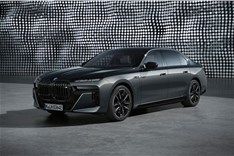
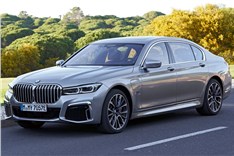
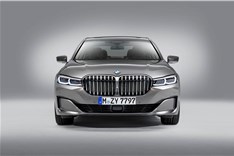


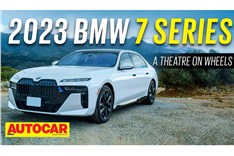
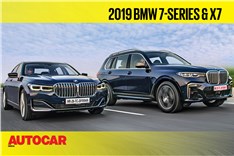
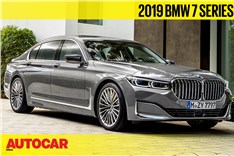

Comments
Member Login
Personal Details
No comments yet. Be the first to comment.